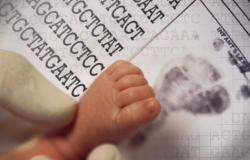As Human Genome Editing Moves from the Lab to the Clinic, the Ethical Debate is No Longer Hypothetical

Karen Yeung and Peter Mills argue that we need to start thinking now about what might be good and bad reasons to preselect certain characteristics of future people.
‘Designer babies’ have featured in media headlines following the publication in July of a landmark report, Genome editing and human reproduction: social and ethical issues, by the UK’s highly respected Nuffield Council on Bioethics. These headlines may catch the eye, but they do not do justice to the much more nuanced discussion that the Nuffield Council’s report promotes.
The report considers the ethics of intentionally altering the DNA of a human embryo (or the sperm and eggs that precede it) to change the characteristics of a future person, in ways that could be inherited by future generations. It concluded that these interventions could be morally acceptable in some circumstances, but these circumstances do not yet (and may never) exist.
At present, British law prohibits such interventions, and the Council concludes that much needs to happen before any reform to the law should be contemplated. As countries around the world are engaging in their own national-level discussions about genome editing, this report offers a fresh perspective in response to the fundamental question of how far people should be allowed to exercise the preferences they may have for their future child.
What can genome editing do?
The Nuffield Council’s review was prompted by the emergence of powerful new scientific techniques, known as genome editing, that enable deliberate, precisely targeted changes to be made to DNA in living cells. Differences in DNA can account for why some people are tall and others short, some athletic and others not, and why some people are born with devastating, life-limiting inherited diseases. The CRISPR-Cas9 technique is the undisputed poster child of genome editing. It has been game-changing for scientific research, enabling genetic alterations to be made many times faster and more easily than by using previous techniques.
Genome editing is beginning to move from the laboratory into the clinic. A number of clinical trials are in progress, using genome-edited cells to treat disease in patients. The technique also has applications in livestock and crop breeding to select traits that can improve the efficiency of food production. But it is the prospect of heritable genome editing, in order to influence the characteristics of a future person, and in turn, those that may come after them, that has attracted the greatest attention and contestation.
Why might people want this?
There are good reasons why one might want to use genome editing in a reproductive context. Inherited diseases such as sickle cell disease, beta thalassaemia, Tay Sachs disease, cystic fibrosis and Huntington’s disease are incurable and life-limiting conditions. They cause real distress to prospective parents who know in advance that any child they conceive will have a calculable likelihood of being affected.
But there are also some not-so-good reasons for wanting to use genome editing, such as a desire to produce children who are more athletic or more intelligent than the norm (although genome editing offers little real prospect of achieving this, and would probably be much less effective than physical training or a well-stocked library). Most observable traits, including diseases, are the result of a complex interaction of multiple genetic and environmental factors. Nonetheless, intentional intervention into the human genome continues, understandably, to provoke acute human anxieties and elicit strong moral responses.
It is worth bearing in mind that, even in the case of serious inherited diseases, prospective parents have options. Existing methods such as prenatal testing or assisted conception combined with preimplantation genetic diagnosis, may enable them to have genetically related children while excluding a disease trait identified in the family. And then there are routes such as egg and sperm donation and adoption. However, there may be some very rare cases in which these are not suitable options, and where genome editing could conceivably offer additional advantages.
Individuals are responsible for their particular choices, but it is science and society that provide people with options. Science and society do not stand still. Not only must we consider the situations in which genome editing might be used, but also the processes by which such technologies might enter into use in the reproductive context. If we find ourselves with a safe, effective technique of genome editing in future, the question changes from ‘can it do this?’ to ‘what else can we do with it?’
Now is the time for debate
Until now, and perhaps for some time to come, no technique for altering DNA has been deemed safe enough to use in human reproduction. In many jurisdictions, including the 29 countries that are bound by the Council of Europe’s Oviedo Convention and others that are not (such as the UK, Germany and China), the deliberate, heritable alteration of the human genome is unlawful. But in many other countries it is not explicitly prohibited.
The Nuffield Council on Bioethics’ report argues that we need to start thinking now about what might be good and bad reasons to preselect certain characteristics of future people, if it ever becomes technically feasible to do so. We should do this soberly and circumspectly, while the science is in its relative infancy, and before the time comes when the placards are painted, asserting prospective parents’ rights to use the technique, and certainly before national legal authorities must make decisions on behalf of society. Recognising that the assisted reproduction industry is global in nature, the Council emphasises the importance of international dialogue and global cooperation, including recommending that the UK must work actively and constructively with other countries to develop a framework that respects the values of different countries and safeguards human rights.
After careful reflection, the Nuffield report concludes that heritable genome editing of humans is not inherently unacceptable. It proposes two principles to guide the formulation and application of governance, should the procedure ever be contemplated. First, such interventions must be intended to secure, and be consistent with, the welfare of the future person. This means that not only must the technique be clinically safe, but such interventions should promote the future person’s psychosocial welfare. Secondly, the policies and arrangements governing the use of the technique should not increase social injustice, discrimination or division, or otherwise disadvantage groups in society. It should not be used to benefit some at the expense of others.
Guided by these two principles, the report makes 15 recommendations addressed to research organizations and governments in the UK and elsewhere, should they be inclined in future to permit genome editing. But before then, there is a need for broad and inclusive public debate - not only (or not primarily) as an instrument to inform national policy decisions, but in order for society to understand, articulate and critique the content and contours of the public interest in genome editing. The complex, interrelated moral norms and values which such interventions might implicate should be deliberately and openly explored. Slogans and catchphrases such as those featured in media headlines surrounding the report are not effective vehicles for nurturing these important and increasingly urgent discussions.
Karen Yeung, Chair, Nuffield Council on Bioethics Working Party.
Peter Mills, Assistant Director, Nuffield Council on Bioethics.
This post first appeared on the Agenda blog.
Image credit: National Human Genome Research Institute via Flickr (CC BY 2.0)


